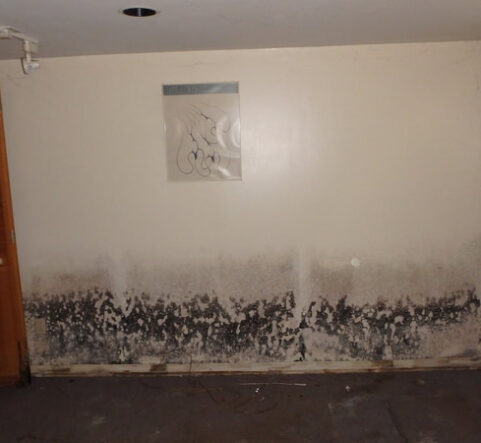Mold can cause serious health problems and structural damage to your home, but catching it early can save you thousands of dollars in remediation costs. The key is knowing what to look for and where to check before colonies have a chance to establish themselves throughout your living space.
Visual Signs to Watch For
Discoloration and Staining
The most obvious sign of mold is visible growth on surfaces. Look for patches that appear black, green, white, gray, or even pink. These can range from small spots to large, fuzzy colonies. Pay special attention to areas that look water-stained, as these often precede visible mold growth.
Texture Changes
Mold can make surfaces appear fuzzy, slimy, or powdery. You might notice that paint is bubbling, peeling, or cracking in certain areas, which often indicates moisture problems that encourage mold growth behind the surface.
Warping and Deterioration
Wood that appears warped, soft, or crumbly may be harboring mold. Drywall that feels soft to the touch or shows signs of deterioration should be investigated immediately.
The Telltale Mold Smell
Mold produces a distinctive musty, earthy odor that’s often described as smelling like wet socks or rotting wood. This smell is particularly noticeable in enclosed spaces and may be your first warning sign, even before you see any visible growth. If you notice persistent musty odors that don’t go away with normal cleaning, investigate further.
High-Risk Areas to Inspect Regularly
Bathrooms and Kitchens Check around sinks, tubs, showers, and behind toilets. Look at caulking, grout lines, and under-sink cabinets. In kitchens, examine areas around the dishwasher, refrigerator, and any places where water might collect.
Basements and Crawl Spaces These areas often have poor ventilation and higher humidity levels. Check foundation walls, floor joists, and any stored items that might trap moisture.
Attics and Roof Areas Look for signs of roof leaks, condensation around vents, and inadequate insulation that might cause temperature differences leading to condensation.
HVAC Systems Inspect air ducts, especially near humidifiers or air conditioning units. Check for condensation around units and ensure proper drainage.
Windows and Doors Examine window sills, frames, and the areas around doors where condensation commonly occurs.

Early Warning Signs Beyond the Obvious
Increased Allergy Symptoms If household members are experiencing unexplained respiratory issues, headaches, or worsening allergies, mold might be the culprit, even if you can’t see it yet.
Humidity Problems Consistently high humidity levels above 60% create ideal conditions for mold growth. Use a hygrometer to monitor humidity throughout your home.
Water Damage History Any area that has experienced water damage, no matter how minor or how long ago, should be monitored closely for mold development.
Detection Tools and Techniques
The Flashlight Test Use a bright flashlight to inspect dark corners, behind furniture, and in shadowy areas where mold typically starts growing.
The Tape Test If you suspect mold but aren’t sure, place clear tape over the questionable area, then examine it under good lighting or with a magnifying glass.
Professional Testing For hidden mold or when health symptoms suggest a problem you can’t locate, consider hiring a professional mold inspector who can use specialized equipment to detect mold behind walls and in air ducts.
Immediate Action Steps
When you spot potential mold growth:
First, don’t disturb the area unnecessarily, as this can release spores into the air. Take photos to document the extent of the problem. Address the moisture source immediately, whether it’s a leak, poor ventilation, or high humidity. For small areas (less than 10 square feet), you may be able to clean it yourself using appropriate safety gear and EPA-approved methods.
Prevention Is Your Best Defense
The most effective mold detection strategy is preventing conditions that allow it to grow in the first place. Maintain humidity levels between 30-50%, ensure proper ventilation in all areas of your home, fix leaks promptly, and regularly inspect areas prone to moisture accumulation.
Remember that mold problems rarely resolve themselves and tend to worsen over time. What starts as a small spot behind a toilet can spread throughout a home’s structure if left unchecked. By incorporating these detection strategies into your regular home maintenance routine, you can catch mold problems early when they’re still manageable and avoid the extensive damage and health risks that come with widespread infestations.
Early detection not only protects your family’s health but also preserves your home’s value and saves you from costly remediation procedures that can take weeks to complete and thousands of dollars to execute properly.
Need A Restoration Company in the Toronto Area?
Call 416 Restoration
1-416-400-5632
416 Restoration Gallery
